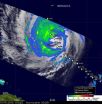(Press-News.org) BATON ROUGE, LA—The ancient fig tree, first imported to the United States during the 16th century, thrives in areas of California and the South Atlantic and Gulf Coast areas of the U.S. One of the most popular trees grown in Southern backyards, fig is favored for its versatile fruit and low-maintenance production.
Charles E. Johnson, Ed O'Rourke, and James E. Boudreaux, from the Louisiana State University Agricultural Center in Baton Rouge, introduced a new fig they named "Champagne" in a recent issue of HortScience. According to the report, the new fig performed well in grower trials and home orchards. It was selected for public release because of its superior fruiting characteristics. 'Champagne' produces a distinctive fruit when ripe, with a yellow exterior and a unique "gold to caramel" internal color. "This feature should present a marketing opportunity for local outlets", noted the authors.
'Champagne', previously unofficially named and propagated as 'Golden Celeste', was developed by the Louisiana Agricultural Experiment Station (LAES) to provide a productive, good-quality fruit that ripens during the traditional fig harvesting period (early July in Baton Rouge). The fruit of 'Champagne' is persistent and does not require pollination. 'Champagne' was found to be slightly more resistant to defoliation caused by the fig leaf rust and leaf spot than 'Celeste'.
The authors noted that one limitation is the tendency of the fruit of 'Champagne' to have a partially closed eye at maturity, which, under humid conditions, could increase the amount of fruit spoilage compared with 'Celeste'. "However, field notes did not denote a greater tendency for fruit spoilage than other cultivars. When the fruit is harvested at the proper stage for processing (firm ripe), this should not present a problem", the research concluded.
The LSU AgCenter does not have nursery trees of 'Champagne' available at this time, but limited quantities of dormant cuttings are available for research upon request.
INFORMATION:
The complete study and abstract are available on the ASHS HortScience electronic journal web site: http://hortsci.ashspublications.org/cgi/content/full/45/2/310
Founded in 1903, the American Society for Horticultural Science (ASHS) is the largest organization dedicated to advancing all facets of horticultural research, education, and application. More information at ashs.org
Introducing 'Champagne', new disease-resistant fig
LSU breeding program produces new fig selection for home orchards
2010-09-21
ELSE PRESS RELEASES FROM THIS DATE:
NASA's MODIS and AIRS instruments watch Igor changing shape, warming over 3 days
2010-09-21
The Moderate Resolution Imaging Spectroradiometer or MODIS, is an instrument that flies on NASA's Aqua and Terra satellites and provides incredible views of tropical cyclones like Hurricane Igor, from its vantage point in space. Imagery from the MODIS instruments on these two satellites captured from Sept. 18 to 20 showed that powerful Hurricane Igor in the Atlantic Ocean is morphing from a rounded storm to more of a comma-shaped storm.
The MODIS instrument on NASA's Terra satellite captured a visible image of Igor at 11:30 am on Sept. 18, while MODIS in the Aqua satellite ...
Food for thought, er, well...
2010-09-21
Ever wonder why it's such an effort to forget about work while on vacation or to silence that annoying song that's playing over and over in your head?
Mathematicians at Case Western Reserve University may have part of the answer.
They've found that just as thinking burns energy, stopping a thought burns energy - like stopping a truck on a downhill slope.
"Maybe this explains why it is so tiring to relax and think about nothing," said Daniela Calvetti, professor of mathematics, and one of the authors of a new brain study. Their work is published in an advanced online ...
Low-calorie cheesecake? Why we have trouble estimating calories
2010-09-21
When it comes to estimating calorie counts, Americans aren't really on the ball. According to a new study in the Journal of Consumer Research, this may be because of the order in which we encounter the food.
"The sequence in which items are considered often influences our evaluations of these items," writes author Alexander Chernev (Northwestern University). "The focus on sequential estimation is important because many meals are ordered and consumed sequentially rather than at once. Moreover, to control their daily calorie intake, people often estimate not only the amount ...
Santa Fe homeowners weigh in on landscape preferences
2010-09-21
LAS CRUCES, NM—While municipalities may mandate communitywide water conservation measures, individuals—particularly homeowners—can make significant contributions to water conservation in urban environments. Hoping to provide urban planners with more information about how residents' landscape preferences affect municipal water supplies, a team from New Mexico State University surveyed homeowners in Santa Fe about their attitudes toward high desert plants. Rolston St. Hilaire, Dawn M. VanLeeuwen, and Patrick Torres reported on their study of residents' preferences for urban ...
Scientists uncover process enabling toxoplasmosis parasite to survive homelessness
2010-09-21
INDIANAPOLIS — The parasite responsible for toxoplasmosis requires a stress response system that helps it survive the move to infect new cells, Indiana University School of Medicine scientists have reported, a discovery that could lead to new treatments to control the disease.
Parasites such as Toxoplasma gondii invade host cells, replicate and then must exit to find new host cells to invade. Traveling outside their host cell exposes the parasites to environmental stresses that limit how long they can remain viable while searching for new host cells.
The researchers ...
Learning how consumers value products
2010-09-21
Suggesting to consumers that they will use a product frequently can actually reduce their interest in purchasing the product, according to a new study in the Journal of Consumer Research.
"When consumers estimate the value of a durable product, they consider not only the absolute number of times they think they will use the product, but also the number of time they will use the product relative to other consumers," write authors Rebecca W. Hamilton, Rebecca K. Ratner (both University of Maryland, College Park), and Debora Viana Thompson (Georgetown University).
The ...
Could learning self-control be enjoyable?
2010-09-21
When it comes to self-control, consumers in the United States are in trouble. But a new study in the Journal of Consumer Research says there's hope; we just need a little help to see self-regulation as fun.
"Self-control failures depend on whether people see activities involving self-control (e.g., eating in moderate quantities) as an obligation to work or an opportunity to have fun," write authors Juliano Laran (University of Miami) and Chris Janiszewski (University of Florida, Gainesville).
According to the authors, approximately one in five U.S. citizens over the ...
Windborne dust on high peaks dampens Colorado River runoff
2010-09-21
On spring winds, something wicked this way comes--at least for the mountains of the Colorado River Basin and their ecosystems, and for people who depend on snowmelt from these mountains as a regional source of water.
"More than 80 percent of sunlight falling on fresh snow is reflected back to space," says scientist Tom Painter of the Jet Propulsion Laboratory in Pasadena, Calif., and the University of California at Los Angeles. "But sprinkle some dark particles on the snow and that number drops dramatically."
The darker dust absorbs sunlight, reducing the amount of ...
Buyer backlash: Why do slogans about saving money increase spending?
2010-09-21
A new study in the Journal of Consumer Research reveals a strange facet of consumer behavior: people behave differently when they encounter companies' brands than they do when they encounter their slogans.
"Exposure to the retailer brand name Walmart, typically associated with saving money, reduces subsequent spending, whereas exposure to the Walmart slogan, (Save money. Live better.) increases spending," write authors Juliano Laran (University of Miami), Amy N. Dalton (Hong Kong University of Science and Technology), and Eduardo B. Andrade (University of California, ...
Money, drugs and chicken feet? What consumers will do for social acceptance
2010-09-21
People who feel excluded will go to any length to try to become part of a group, even if it involves spending large sums of cash, eating something dicey, or doing illicit drugs, according to a new study in the Journal of Consumer Research.
"Social exclusion prompts people to use money and consumption in the service of affiliation," write authors Nicole L. Mead (Tilburg University), Roy F. Baumeister (Florida State University), Tyler F. Stillman (Southern Utah University), Catherine D. Rawn (University of British Columbia), and Kathleen D. Vohs (University of Minnesota).
"An ...
LAST 30 PRESS RELEASES:
Australian team discover why quantum computers have memory problems over time
What determines the fate of a T cell?
Candida auris: genetic process revealed which could be treatment target for deadly fungal disease
Groundbreaking discovery turns household plastic recycling into anti-cancer medication
Blocking a key inflammatory pathway improves liver structure and vascular function in cirrhosis, study finds
Continuous spread: Raccoon roundworm detected in nine European countries
HKUST Engineering researchers developed a novel photodetector to enhance the performance of on-chip light monitoring
Strategic river sensors could have forewarned of Texas Camp flood disaster
Drone sampling of whale breath reveals first evidence of potentially deadly virus in Arctic
Roman soldiers defending Hadrian’s Wall infected by parasites, study finds
Pinochet’s prisoners were tormented with music but still found solace in it, a new book reveals
Fertility remains high in rural Tanzania despite access to family planning
AI-assisted device can improve autism care access
Kinetic careers
Uncovering how parasitic plants avoid attacking themselves to improve crop resistance
Nanoparticle vaccine strategy could protect against Ebola and other deadly filoviruses
Study finds brain care score can predict risk of stroke across racial groups
Key lung immune cells can intensify allergic reactions
Do hormones explain why women experience more gut pain?
New materials conduct ions in solids as easily as in liquids
Breakthrough of the Year: Renewable energy begins to eclipse fossil fuel-based sources
LLM use is reshaping scientific enterprise by increasing output, reducing quality and more
Introducing LightGen, a chip for ultra-fast, ultra-efficient generative AI
Astronomers see fireworks from violent collisions around nearby star
ACC/AHA issue new guideline on managing congenital heart disease in adults
Cosmic crash caught on camera
Is talented youth nurtured the wrong way? New study shows: top performers develop differently than assumed
Ants: An untapped resource in the development of antibiotics?
Archaeologists use AI to create prehistoric video game
Mitochondria migrate toward the cell membrane in response to high glucose levels
[Press-News.org] Introducing 'Champagne', new disease-resistant figLSU breeding program produces new fig selection for home orchards



